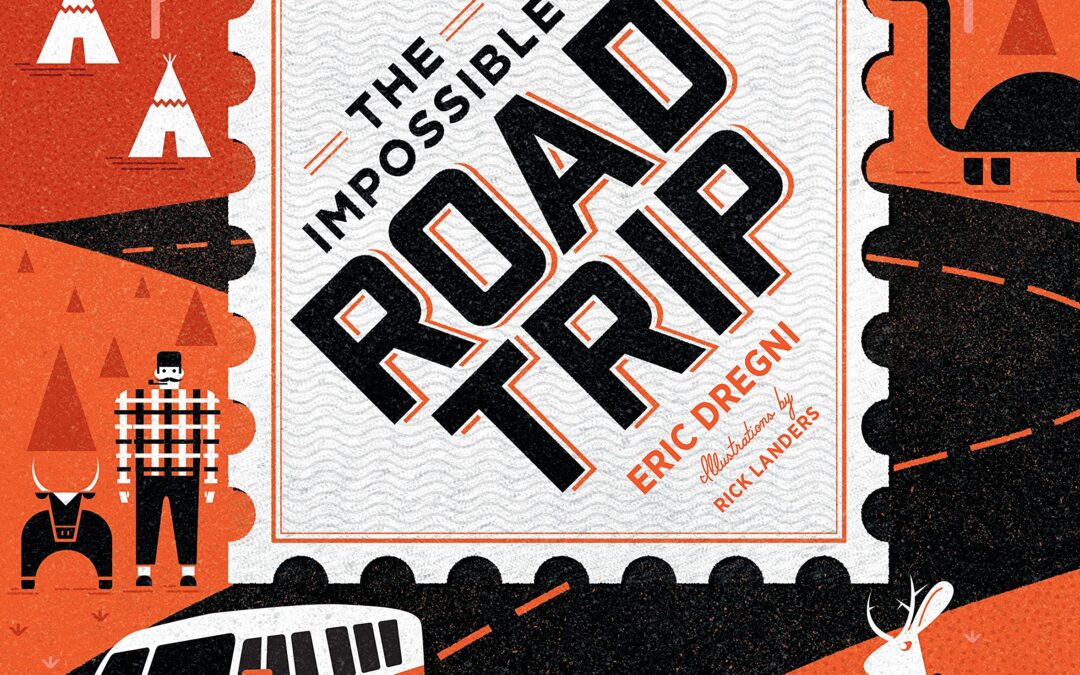
Filled with color photography, entertaining site descriptions and histories, and five unique infographic map illustrations, The Impossible Road Trip is your ultimate look back at America’s most famous—and quirkiest—roadside attractions, past and present.
The great American road trip is back. With its advantages for your health, budget, and the environment, now is the time to plan the road trip you have always dreamed of taking.
Following in the great tradition of the mid-century golden age of car travel, join the new wave of road warriors with a targeted itinerary chosen from the 150 roadside attractions explored in this colorful guide. From famous to quirky and covering all 50 states, author Eric Dregni gives you an unprecedented look at the breadth of roadside attractions in the US, illustrated in part by the photography of architectural critic and photographer John Margolies (1940–2016). Specially commissioned infographic map illustrations capture the spirit of mid-century automobile travel.
Each site depicted is accompanied by a lively and insightful history and color imagery. From autumnal New England to the gothic South, from the homey Midwest to the great expanses of the Desert Southwest, the dizzying heights of the Rocky Mountains, and the breathtaking Pacific Coast, The Impossible Road Trip encompasses it all:
- Neon-shrouded motels
- Mimetic architecture
- Tourist traps
- Roadside sculpture
- And much more
You’ll see sites both famous and esoteric, including the Cardiff Giant in Cooperstown, New York; the five-story Haines Shoe House in York, Pennsylvania; Solomon’s Castle in Florida; the world’s largest fish in Hayward, Wisconsin; one of several Paul Bunyan statues; Bob’s Big Boy in Burbank, California; and so many more.
With The Impossible Road Trip in hand, set out to discover the nation’s oft-overlooked nooks and crannies.
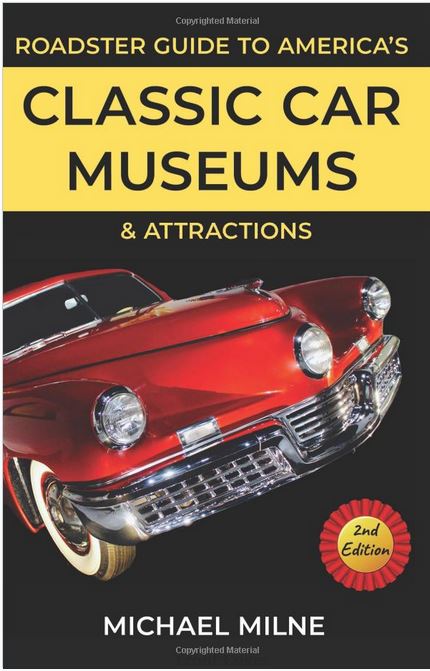
Introducing the updated and expanded 2019 Second Edition of the perfect tool for anyone who loves vintage and collector cars!
Motoring from coast to coast, this new edition of the
Roadster Guide to America’s Classic Car Museums & Attractions features more than 300 auto-themed sights.
Ranging from the Stanley Museum in Maine to the San Diego Automotive Museum, the book helps car buffs plan exciting adventures, or discover a fun car museum close to home. Whether it’s Model Ts, the “tail fin” era, muscle cars, elegant roadsters, early race cars, vintage trucks, and so much more, fans of classic cars will find all their favorites in one place in this comprehensive 400-page book packed with more than 60 photos.
With a focus on museums that are open to the public, the destinations run the gamut from full-throttle collections, like the Auburn Cord Duesenberg Museum and the Petersen Automotive Museum, to smaller treasures like the Franklin Automobile Museum in Arizona, the Studebaker National Museum in Indiana, and Ohio’s National Packard Museum.
This unique travel guide also includes intriguing automotive sights like:The Tucker Trail in Pennsylvania, where you can see five Tuckers in one day; two Frank Lloyd Wright designed service stations; and Carhenge in Nebraska (it’s a quirky re-creation of Stonehenge made out of vintage American sedans), and many, many more.
Bring the Roadster Guide to America’s Classic Car Museums & Attractions along on your next road trip to discover fascinating car museums and vintage car attractions across America.
Printed in the USA.
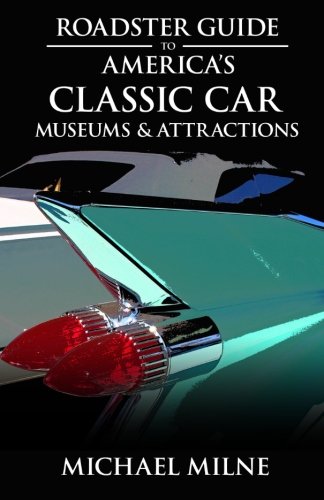
See newer edition here https://www.autobooks-aerobooks.com/product/roadster-guide-to-americas-classic-car-museums-and-attractions-second-edition/
Introducing the perfect tool for anyone who loves vintage and collector cars!
Motoring from coast to coast, the Roadster Guide to America’s Classic Car Museums & Attractions features over 250 auto-themed sights. Ranging from the Stanley Museum in Maine to the California Automobile Museum, the book helps car buffs plan exciting adventures, or discover a fun car museum close to home.
Whether it’s Model Ts, the “tail fin” era, muscle cars, elegant roadsters, early racecars, vintage trucks, and so much more, fans of classic cars will find all their favorites in one place in this comprehensive 340-page book packed with more than 60 photos.
The destinations run the gamut from full-throttle car collections, like the Henry Ford Museum and the NASCAR Hall of Fame, to smaller treasures like the Franklin Automobile Museum in Arizona, the Studebaker National Museum in Indiana, and Ohio’s National Packard Museum.
This unique travel guide also includes intriguing automotive sights like:
- The Tucker Trail in Pennsylvania, where you can see five Tuckers in one day,
- Cadillac Ranch in Texas,
- Carhenge in Nebraska (it’s a quirky re-creation of Stonehenge made out of vintage American sedans), and many, many more.
The book is also laced with intriguing auto-related anecdotes, including how Henry Ford cleverly used wooden scraps left over from Model T production to create Kingsford Charcoal.
Bring the Roadster Guide to America’s Classic Car Museums & Attractions along on your next road trip to discover fascinating car museums and vintage car attractions across America.
Brian and Sarah Butko
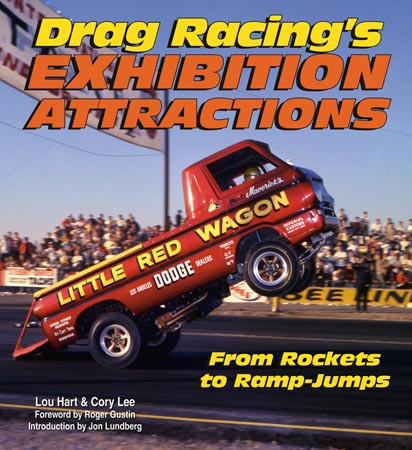
This book showcases photographically the wide variety of cars and drivers that fit into the exhibition theme: the jets, wheelstanders, rockets and other exhibition vehicles whicimageh have thrilled millions of spectators. Their entire basis was who had the fastest vehicle. But in 1959 complaints from other competitors and Detroit automakers got all aircraft-powered dragsters banned, so they became the sideshow attached to the legitimate circus that is drag racing. The Green Monster became the first exhibition car exceeding 200 mph everywhere it ran. Wanting even more, Walt Arfons debuted the first jet-powered dragster which became the desire of every fan and promoter throughout the country. At virtually the same instant, Tom Ivo had Kent Fuller build a four-engine dragster and although it was too heavy to be competitive, the tire-smoke show became arguably the most famous exhibition car in history. See Bill “Maverick” Golden and the Little Red Wagon, “Wild Bill” Shrewsberrys and the Hurst Hemi Under Glass, LA Dart and Knotts Berry Wagon, Chuck Poole and his Chuckwagon, Doug Rose and The Green Mamba, plus many more.

70 races, 70 days that in 70 years have marked the history of the Imola racing circuit.
From the mid-1950s, the track on the backs of the Santerno river, dedicated to Enzo and Dino Ferrari, has been one of the authentic cult attractions for the enthusiasts of motor racing on two and four wheels. The facility has seen events such as the Coppa Shell, the motorcycling 200 Miles, the 500 Kilometres reserved for covered wheel cars and, of course, the San Marino Grand Prix, part of the blue ribbon Formula 1 World Championship since the early 1980s.
Tracing the history of this fascinating circuit means reviewing the history of motorcycle and car racing at the highest levels, history featuring the greatest manufacturers, drivers and riders.
The painstakingly researched historical texts are accompanied by hundreds of black and white and colour photographs, the majority of which were previously unpublished and many drawn from the archive of photographer Franco Villani.
This commemorative book has been compiled in close collaboration with the Imola Autodromo to celebrate the circuit’s first 70 years.
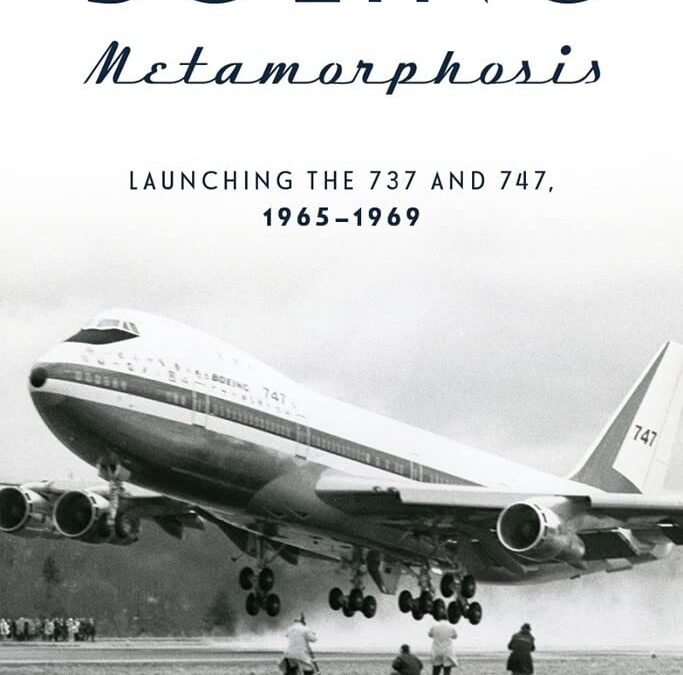
A unique insider look at the profound changes Boeing experienced in the 1960s as the product mix shifted from military hardware to the first generation of jet-powered airliners.
Welcome to the world of corporate decision-making, workplace gambles, and a myriad of human interactions. This is a story that affirms the traditional values of hard work, fidelity, and building the human alliances necessary for achieving enduring success. John Andrew, a retired Boeing executive, offers a unique insider perspective of the changes Boeing experienced in the 1960s.
- The requirement for more factory space was fueled by new models and a surging worldwide demand for air travel.
- Massive construction projects were launched, including a newly constructed 747-sized factory on 760 acres at Paine Field in Everett, Washington.
- These cathedrals of airframe assembly remain vital to Boeing’s ongoing operations today.
- More than 130 color and black-and-white images.
Explore the amazing growth and evolution of Boeing, one of the giants of aviation.
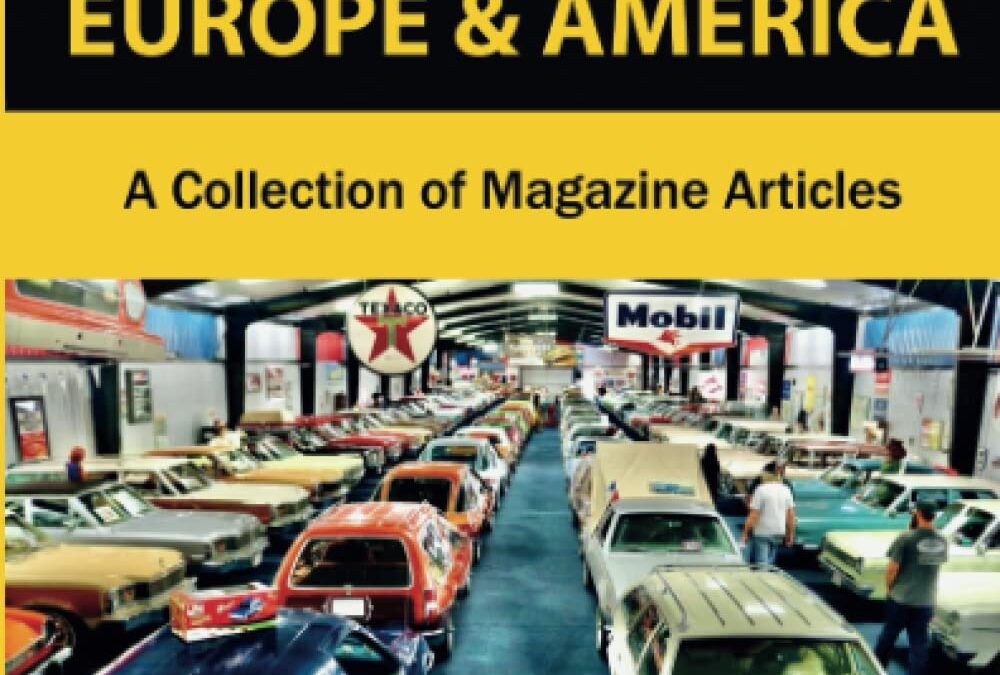
- Car enthusiasts will enjoy 75 Top Car Museums in Europe & America, a perfect companion to the author’s previous book, the Roadster Guide to America’s Classic Car Museums & Attractions.
- The collection of magazine articles about 75 leading car museums in Europe and America provides in-depth coverage of museums ranging from the Hellenic Motor Museum in Greece to the Petersen Museum in California.
- Side trips include Italy’s Museo Ferrari and the National Motor Museum in England while quirky cars are on display at the Trabi Museum in Berlin, State Police Car Museum in Rome, and the Cars of Socialism Museum in Bulgaria.
- Among the highlights in America are Michigan’s Gilmore and Henry Ford museums, Presley Motors at Graceland and two iconic LeMay museums in Washington.
- These articles were written by the author and previously published in leading car magazines including Hemmings Motor News, Classic & Sports Car, Octane, Classics Monthly, Classic Military Vehicle, and more.

During the first half of the 1970s, two new fighter aircraft entered operational service in the United States: The Navy’s Grumman F-14 Tomcat and the Air Force’s McDonnell Douglas F-15 Eagle. These two aircraft were part of the backbone of the tactical air power of the United States; their introduction was accompanied by comprehensive reforms in pilot training as well as new technologies and weapon systems. In addition to the tactical significance of the two aircraft as innovative fighting platforms, however, their development and deployment should be viewed within a broad geopolitical and geostrategic context. Tovy explains how the F-14 Tomcat and the F-15 Eagle were an integral part of the aerial component of the conventional arms race within the Cold War. He argues that the trend of Soviet advanced weapon systems development created a perception of threat to the United States, challenging its conventional military power. Tomcats and Eagles explores how the Vietnam War accelerated the need for advanced fighter-interceptors, and that the lessons learned from aerial combat in Vietnam had a significant impact on the design and operational characteristics of the F-15. The author reveals that after F-14s were sold to Iran and F-15s to Israel in the second half of the 1970s, these jets were integrated into their armed forces, leading to Israel’s use of the F-15 during the First Lebanese War. Finally, the author provides an in-depth look at the operation of the F-14 and F-15 in U.S. actions in Southeast Asia, beginning with the Tanker Wars in the mid-1980s, through Operation Desert Storm and Operation Enduring Freedom, and ending with Operation Iraqi Freedom.

Expanded new edition
The first edition of the present book was published in 2014 and was quickly acclaimed as the bible of the classic Jaguar racers. This greatly expanded new edition runs to more than 400 pages and contains 500 illustrations. It brings the individual stories of over 150 cars up to date, and includes additional useful information and appendices. Today the name of Jaguar still ranks high in the pantheon of British cars that have won the Le Mans 24-hour race. A mere 20 years since the birth of their first car, Jaguar had become the leading high-performance car in Britain thanks to the revolutionary XK engine, and the XK120 was in its day the fastest production car in the world. While the company had begun to earn its spurs in motor racing, it was a bold step to build a new car with the specific intention of entering Le Mans, at the time the most famous motor race in the world. Remarkably, the new Jaguar C-type succeeded in winning at Le Mans on the first attempt. A further four Le Mans victories followed: in 1953 for the C-type again, and then three wins for D-types from 1955 to 1957, by which time the Jaguar works team had been withdrawn from racing. Private entries of Jaguar C- and D-types in other races continued for many years. The E-type was never as successful in racing, since it was conceived as a GT road car rather than a racer, but the small run of lightweight cars and other competition versions added further lustre to Jaguar’s reputation. C- and D-types were sold in some numbers to private owners on both sides of the Atlantic, many of whom obviously used them for racing, but unlike most later sports-racing cars they could still be used on the road. This was and remains one of their many attractions. Virtually all the cars have survived, and in recent times have seen a steady increase in value. This updated, enlarged and comprehensive new edition of the Register is a tribute to these glorious cars, to the people who were involved in their design and production, and to the drivers who campaigned them.

A landmark book documenting the first-ever art amusement park – launched in 1987 in Hamburg, Germany – in anticipation of its global reintroduction
In the late 1980s, more than 30 of the era’s most acclaimed artists – including Jean-Michel Basquiat, David Hockney, Roy Lichtenstein, Salvador Dalí, and Keith Haring – designed unique and fully operational fairground attractions specifically for the original park, including rides, interactive sculptures, games, performances, and music.
Each artist’s contribution is documented in photographs that show the artist at work, with details of the artworks, and showing the art in the context of the exhibition. Giving access to rare artworks that have not been widely viewed in 35 years, this book is being published for the first time in English with an updated preface.

This wonderfully illustrated, up-to-date guide to the natural, cultural, and historical gems hidden just off the legendary Route 66 outlines 30 trips for curious travelers.
Route 66 is arguably the
world’s most famous highway (more than 60% of Route 66 adventurers are from overseas!)—its motels, diners, and roadside attractions comprising a time capsule of America’s love affair with the automobile. While many of the road’s
iconic attractions have disappeared with time (along with large stretches of the road itself), others are as enduring as ever.
In this completely revised and updated version of The Backroads of Route 66, author and Route 66 expert Jim Hinckley is your guide from the lowlands of the American Plains to the high plateaus of New Mexico and Arizona, from the Great Lakes to the mighty Pacific Ocean, and through major metropolises and remote country towns.
But rather than take the road oft traveled and the sites most photographed, Hinckley encourages you to branch off the Mother Road and discover the hidden gems beyond today’s familiar motels and tourist traps—quaint frontier communities that date to westward expansion; the legacy of native cultures; and the awe-inspiring natural wonders that have graced these lands since time immemorial. There to be explored within a few hours’ drive from the path of Route 66, discover:
- Outdoor attractions
- Museums
- Historic sites
- And much more
The thirty trips in The Backroads of Route 66 offer new travel opportunities for you and the thousands of road-trippers who follow this legendary route, looking for something more.
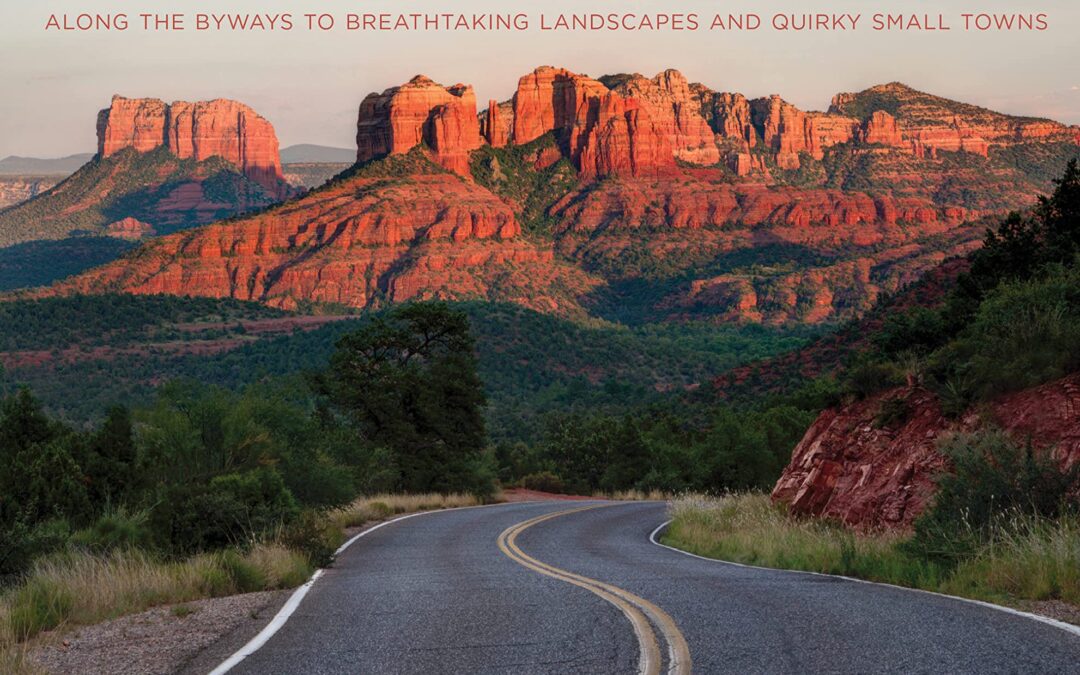
Explore the wide open spaces of Arizona with this guide to roads less traveled and awe-inspiring sights less seen.
Backroads of Arizona guides you into the heart of Arizona’s sun-shiny beauty and fascinating history. In this thoroughly updated edition, you’ll find twenty-five driving tours and adventures that take you off the beaten path to stunning landscapes and breathtakingly beautiful vistas. Marvel at the multicolored hues of the Painted Desert and the jaw-dropping majesty of the snowcapped San Francisco Peaks. Wander into a sky-high forest of regal ponderosa pines and quaking aspens near Flagstaff, scan the deep blue waters of Lake Havasu on the western border, and feel dwarfed by the incredible Grand Canyon. With scenic drives in all corners of the state, Backroads of Arizona offers insight into Arizona’s rich history, from the Spanish conquistadors seeking the legendary cities of gold to the Wild West shootout at Tombstone’s OK Corral.
Thanks to the maps and directions to the Grand Canyon State’s unique scenic, historic, and cultural attractions, you can explore prehistoric cliff dwellings, hike to see a mountainside of cacti in bloom, or get your kicks on Route 66. This second edition includes new routes along timeless roads, with fresh images and pithy stories of what can be found along the way. Discover something off the beaten path, and make memories you’ll never forget.
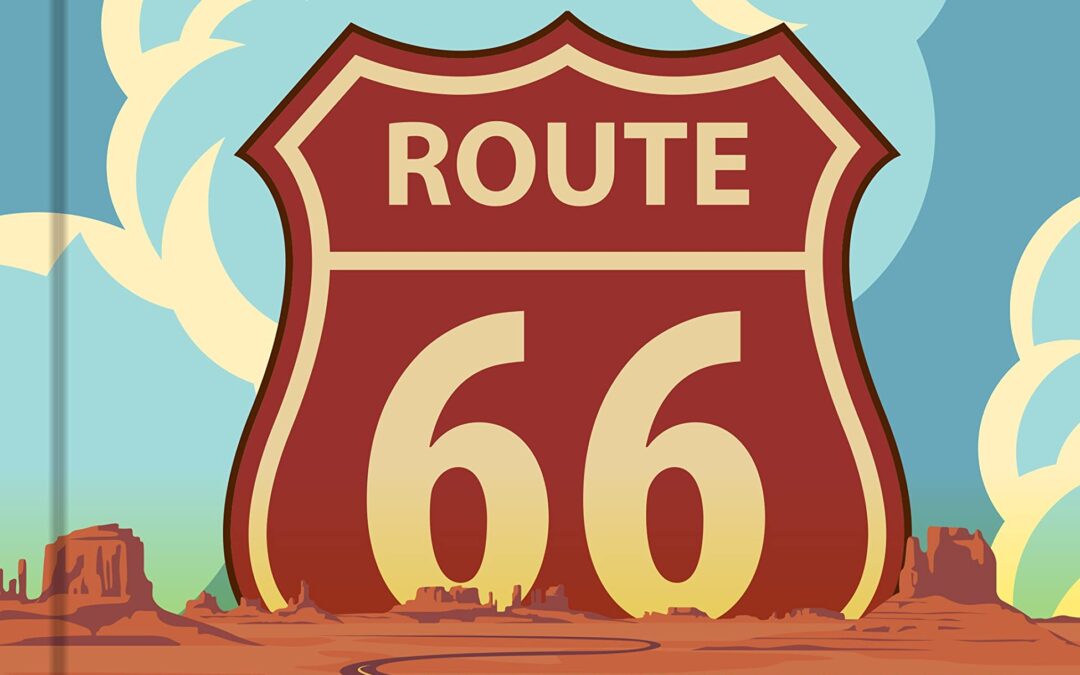
Here We Are . . . on Route 66 explores and celebrates iconic landmarks and cultural touchstones associated with America’s most famous highway—and guides you to some lesser-known gems just off the beaten path.
Spanning nearly 2,500 miles and eight states—Illinois, Missouri, Kansas, Oklahoma, Texas, New Mexico, Arizona, and California—America’s Main Street has given rise to a colorful assortment of roadhouses, motels, greasy spoons, roadside amusements, and breathtaking natural scenery. Acclaimed Route 66 historian Jim Hinckley is your guide to a carefully curated selection of these sites, ranging from the iconic to the revelatory.
Arranged by classic Route 66 topics, each spread gives you a different 66 site or attraction, along with a concise and authoritative history illustrated with colorful photography, evocative historical imagery, and collectibles like postcards, ads, and more. Topics of organization include:
- Towns and Cities
- Natural Wonders
- Roadside Attractions
- Eateries
- Motels and Hotels
- Music, Film, and TV
Hinckley is perhaps the most internationally recognized authority on the subject of America’s Main Street. This collection offers you the stories behind Route 66 icons such as Baxter Springs and Tucumcari, Meramec Caverns, Arroyo Seco Byway, Berghoff’s and the Oatman Hotel, Munger Moss and Wigwam Motel—and dozens more. Hinckley also treats you to a fresh look at lesser known but deserving attractions too.
At nearly a century old, Route 66 remains the embodiment of the classic American highway. Written by an acknowledged authority on the subject, wonderfully illustrated, and presented in a manner that allows you to dip in and out, Here We Are . . . on Route 66 is a must-have for your Route 66 bookshelf.

Motorsports greats on their rivals, teammates and heroes
Published in support of cancer charity Hope for Tomorrow, Drivers on Drivers features some of the greatest names in motor racing speaking candidly about their biggest rivals as well as their heroes, teammates and friends. It is a unique concept, with those interviewed ranging from legends of the 1950s such as Tony Brooks and 1960s rally icon Paddy Hopkirk, to Derek Bell, Mika Häkkinen, and current superstars such as Sir Lewis Hamilton.
Each driver is in conversation with a leading motorsport writer or broadcaster, and the book is illustrated with stunning photography throughout.
- Thirty-one revealing interviews, featuring motorsport legends opening up about their fellow drivers and offering unique insights into what separated the great from the good, who they looked up to and learnt from, and who to avoid on-track.
- Interviews include Tony Brooks on Stirling Moss, Jackie Stewart on Jim Clark, Gerhard Berger on Ayrton Senna, Mark Webber on Sebastian Vettel, and many more…
- Interviewees include eight Formula One World Champions, nine winners of the Le Mans 24 Hours, and 13 Grand Prix winners.
- Interviews conducted by Philip Porter along with a team of leading motorsport writers and broadcasters – Mark Cole, Ben Edwards, Louise Goodman, Simon Taylor, David Tremayne, Peter Windsor and Ian Wagstaff.
- Contains stories of tragedy and humour, triumph and disaster, as these great names give personal insights into motor racing’s deepest friendships and fiercest rivalries.
- More than 100 superb photographs illustrating pivotal career moments, on-track battles, and candid shots of their interactions with fellow drivers.
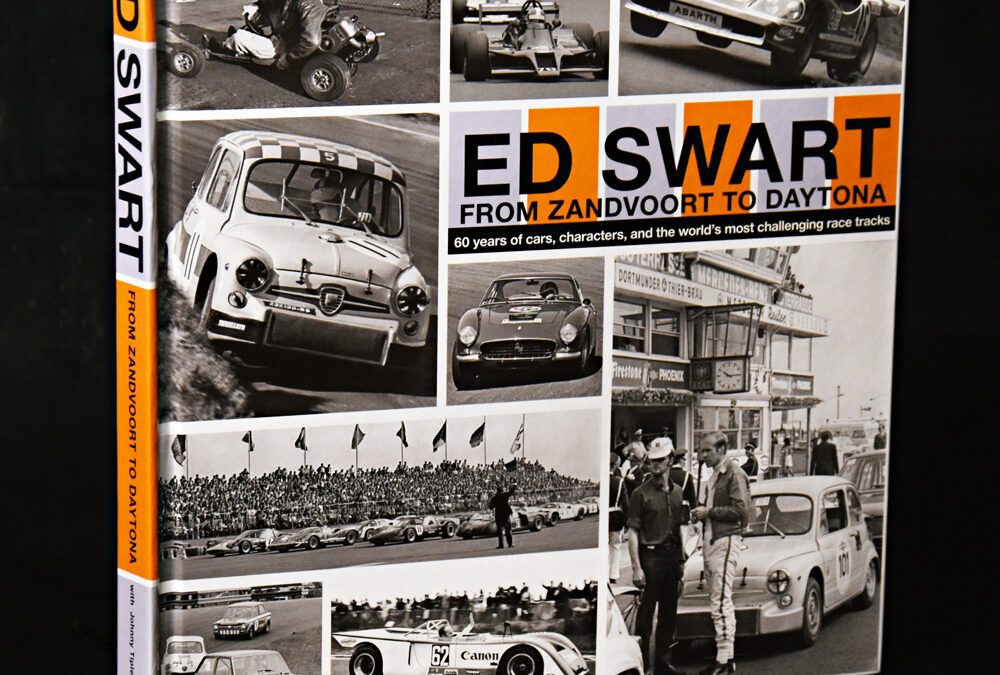
Anyone who drove racing cars in the 1960s and ’70s has a wealth of stories to tell, and Ed Swart is no exception. Having competed at international level in touring cars – winning the 1965 European Touring Car Championship Division 1 in the process – and been a front-runner in the European 2.0-litre Sportscar Championship in the late ’60s and early ’70s, as well as helming GTs, sports-prototypes and running an international race circuit – Zandvoort, no less – Ed Swart has more to say about the period than most people. And whilst most drivers from that era retired long ago, Ed has kept on keeping on racing through historic racing. This is the fascinating account of his life, immersed continuously in top-line motor sport.
Just like Sir Stirling Moss did back in the day, Ed Swart scrupulously kept a diary of his racing actions, based on scrapbooks of press clippings, which provides us with an unparalleled record of the crowded schedule of the pro-am racing circus during that heady decade and a half.
This fascinating 10×10-inch, 192-page hardback book, contains over 300 photographs and tell the story of racer Ed Swart who started his motorsport career rallying at the age of 18 and was soon involved in the early days of karting. As Ed’s father was a distributor for Fiat, based in the Hague, early on Ed was obliged to race only Fiat cars, under the title Scuderia Auto Swart – or Team S.A.S, but after he spent a year in Italy at the Fiat school and Abarth factory, he started racing Fiat-Abarth production cars. Ed raced for five years with the Works Abarth team, winning the 1965 and 1968 class Championships. In 1969, when Carlo Abarth produced a genuine 2-litre sports car, Ed bought one to compete in the FIA 2.0-litre Sports/Prototype Championship. After the Abarth company was sold to Fiat and no longer making race cars Ed became a true Chevron fan and has raced them ever since, both on a professional basis in Europe and then after he moved to the USA in historic racing.
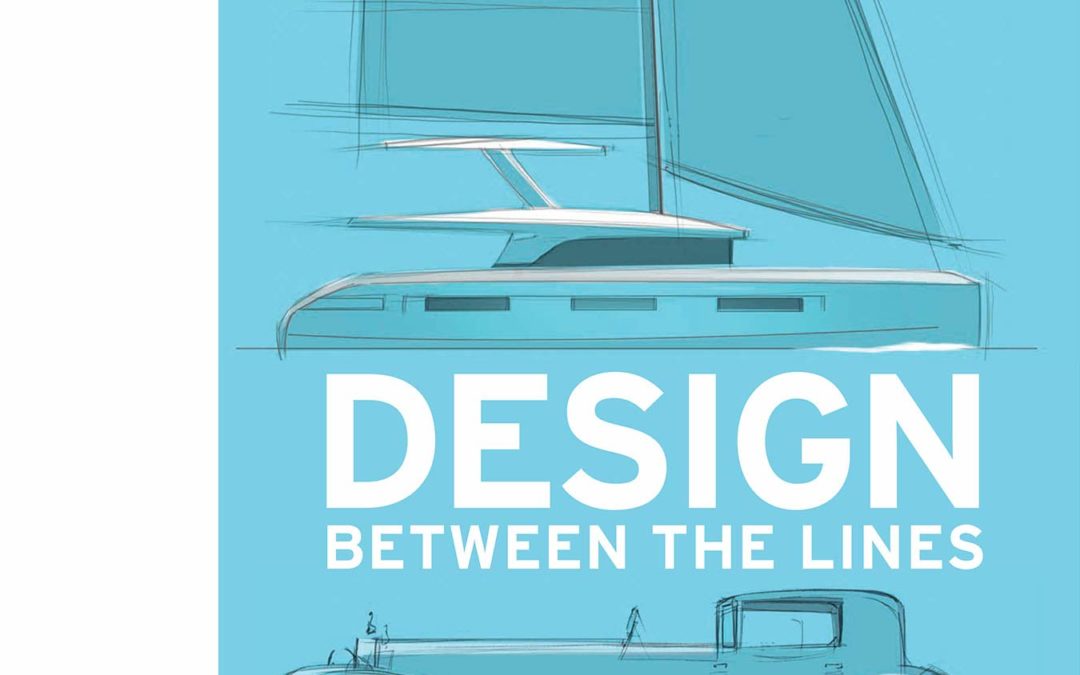
The car industry and the way in which cars are created have changed beyond all recognition over the last half-century. Automotive styling was once the grudging afterthought when the engineers had finished their work. Now, following a short flirtation with exotic Italian design houses, it has evolved into sophisticated design carried out by multitalented in-house teams honing carefully crafted brand identities.
One of the visionary designers at the forefront of that revolution has been Patrick le Quément. Most widely acclaimed for his 22 years in charge of Renault Design, resulting in such standout models as the Twingo, Scénic and Avantime, le Quément has enjoyed a 50-year career that has also taken in Simca, Ford and Volkswagen-Audi. In his foreword to the book, Stephen Bayley calls le Quément ‘perhaps the very most original designer working in the conservative car business at the turn of the millennium’. Some 60 million cars across the world now bear the unmistakable stamp of le Quément.
Design: Between the Lines is not a straightforward autobiography; rather, le Quément charts his journey through five decades of thoughts, actions, failures and successes. He offers fascinating commentaries on design and the creative process, and on some of the extraordinary automotive brands that make up our shared cultural heritage. As Bayley notes, for le Quément, design is ‘as much a matter of thinking as a matter of drawing’. On a broader, more philosophical level, le Quément also shares his views about life in general and that remarkable contraption called ‘the automobile’, which has so influenced the lives of millions of people the world over from the late 1800s to the present day.
Presented as a series of 50 brief essays or ‘perspectives’, le Quément’s thoughtful and astute observations from the street, from the design studio and from his seat in the boardroom give the reader a penetrating and often amusing insight into the high-level workings of a global industry, its triumphs and tragedies, and the foibles of the decision-makers responsible for running it. A lively complementary text by the automotive journalist Stéphane Geffray accompanies each of le Quément’s perspectives, and illustrations are provided by the automobile designer Gernot Bracht. Design: Between the Lines will appeal to all motoring fans and enthusiasts of good design. As Chris Bangle, the former Director of BMW Design, remarks: ‘Few car designers have had a career so filled with innovative successes that they have inspired a whole industry; fewer still have the skills to share it. Engaging and revealing, Patrick relates his personal experience and deep knowledge of car design in a very enjoyable manner.’

The Mercedes-Benz W123 was launched in 1976 and sales quickly surpassed those of its predecessor, the W114. The W123 went on to become the most successful Mercedes, selling 2.7 million cars.This book features the history of the development of the car within the context of the Mercedes-Benz company and global motor industry; the styling, engineering and technical advances introduced over the lifetime of the three series, and the press reactions to them.
Full technical specifications are given together with customer options, equipment and interior trim for each model. Production numbers and vehicle number sequences are listed and little-known details of the manufacture of the car in China are given. There is a chapter on buying and owning a 123-series Mercedes.
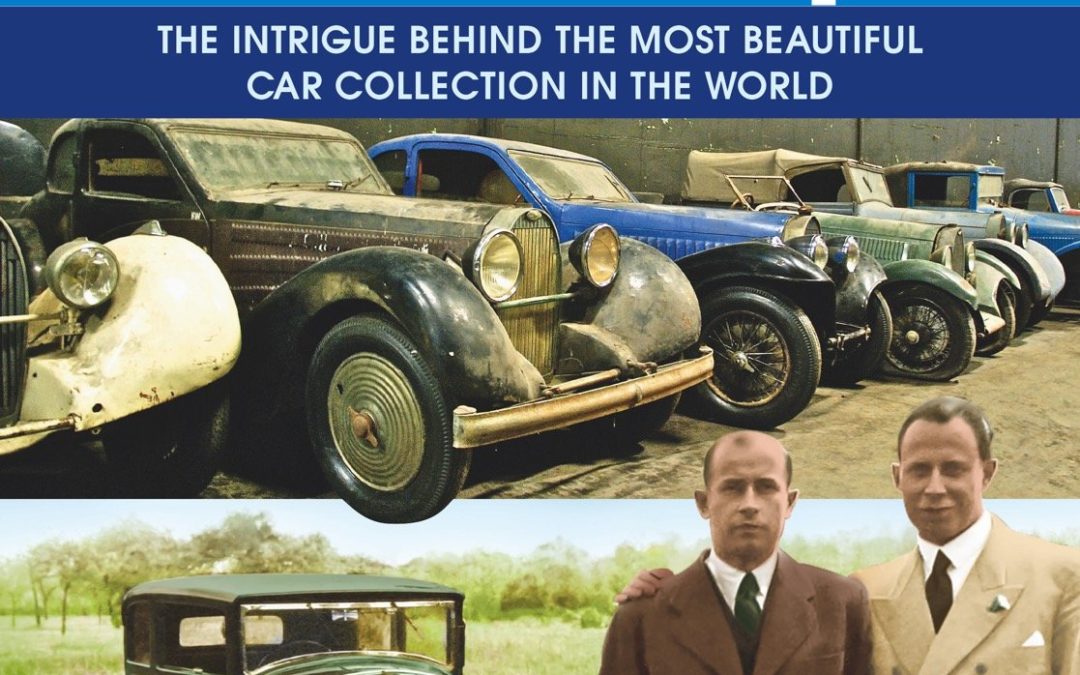
This fabulous collection of cars was brought together by two French brothers, Hans & Fritz Schlumpf, and consists of hundreds of the most beautiful cars ever produced. The ‘Schlumpf affair’ is perhaps one of the most famous stories in the car collectors world, covered extensively by the media in the mid-1970s, when the collection was seized by the trade unions and later by the French government. The Schlumpf brothers were accused of fraudulent actions to obtain their collection — but following extensive research by the authors of this book, the true story behind the collection is revealed. Ard and Arnoud op Weegh spent many years investigating the Schlumpf affair, and discovered many previously unpublished documents which prove that the Schlumpf brothers have been wrongly accused over the years. This book is written to tell the true story behind the collection, and also to rehabilitate the Schlumpf family name.
The book is beautifully illustrated with some rare photographs, and features many of the beautiful cars that make up the Schlumpf collection.





















